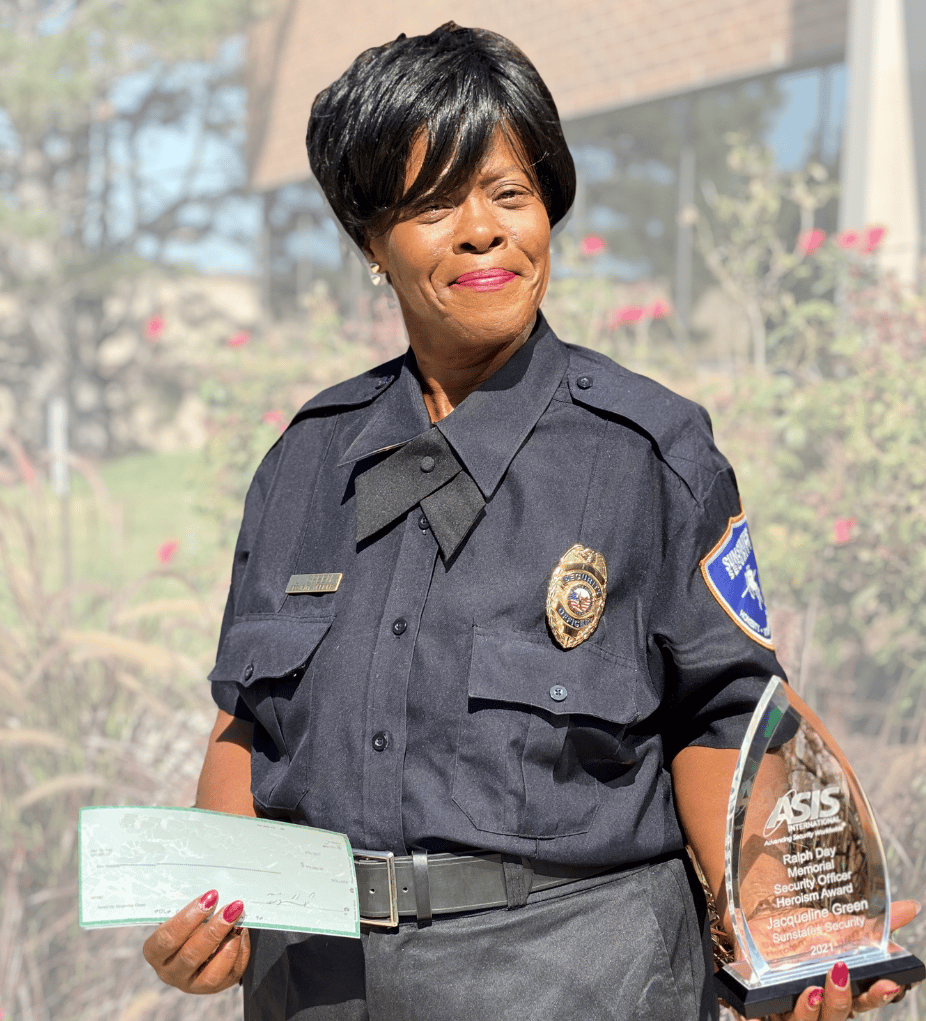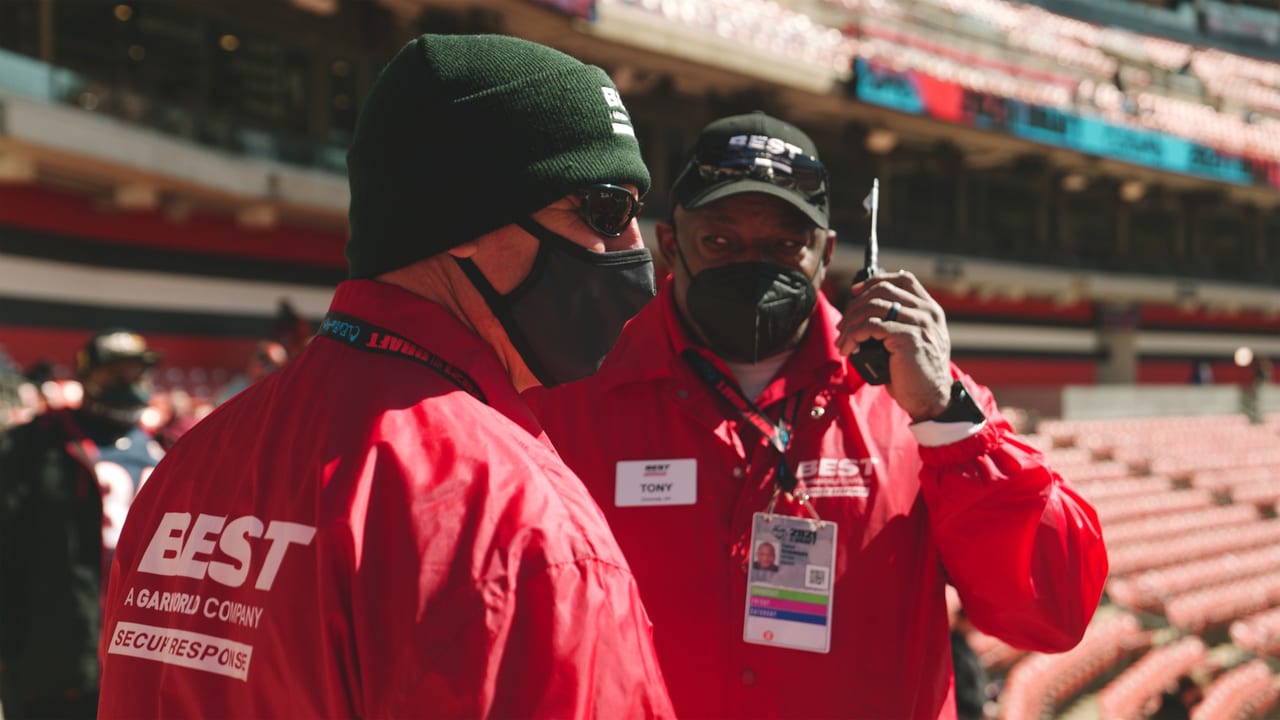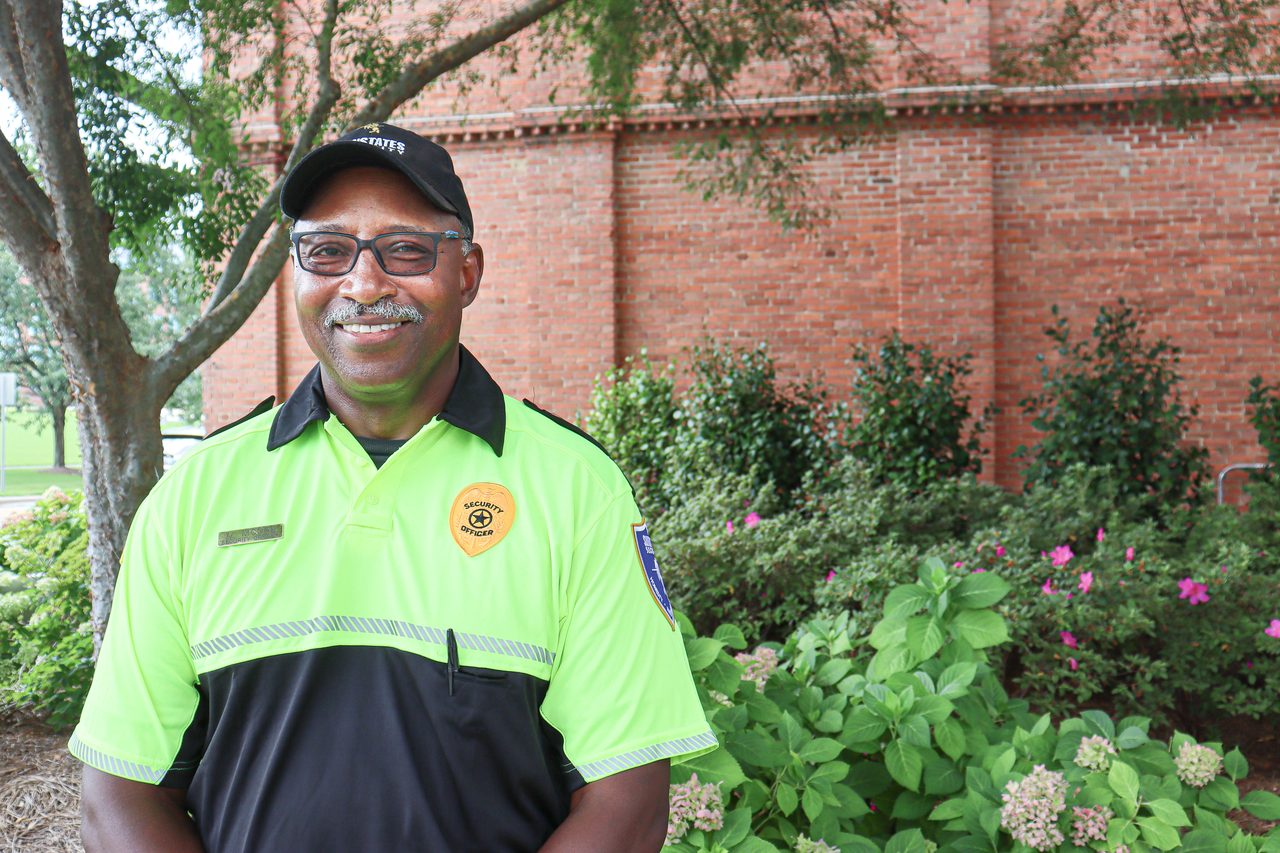december 2021

By Ed Finkel, Contributing Writer
Special Report
The continued pandemic, labor shortages, a shift in the hybrid and remote workforce, and other factors have led to an increased threat landscape, hiring challenges and changing roles of security officers.
Challenges for the Guarding Industry
Increasing commercial activity across a variety of economic sectors and difficulties in hiring new personnel have created a set of challenges for guarding companies and their clients as the pandemic continues and the calendar turns to 2022.
Many enterprises continue to have all or large portions of their workforce remote, which has changed the threat landscape and reimagined the job of security officers in many ways. Enterprise security leaders and guarding companies are also leveraging people and technology differently than before the pandemic.
Workplaces mirror their communities, which means those businesses and locations face the same social and political issues, says David Komendat, Vice President and Chief Security Officer for The Boeing Co. Security organizations must work closely with human resources, safety, legal and communications to address these issues effectively and reduce the risk of disruption, he says.
Drexel University in Philadelphia has been working to keep doors and security locking systems up to date while also integrating and updating its more than 700 cameras mounted at facilities, with plans to roll out body-worn cameras in the coming months for officers themselves, says Eileen Behr, Vice President of Public Safety and Chief of Police at Drexel University. “Even though we’re campus police, we’re part of police reform,” she says. As such, her on-campus department has required “additional training for officers in de-escalation and crisis intervention techniques.”
Securitas has made a multimillion-dollar investment in digital transformation to enhance transparency and data-driven insights, as well as to accelerate innovations in areas like solar-powered devices and remote reception, says Greg Anderson, Securitas President and CEO, North American Guarding. The company has evolved the role of officers to meet the needs of organizations that moved to remote or hybrid operations, he says.
Prior to COVID-19, guards for Securitas client Unico Properties — a private equity real estate investment and development company — mostly managed crowds and handled the hustle-and-bustle of buildings, keeping the occasional unwanted visitors from being disruptive in a lobby, says Keren Eichen, Director of Real Estate at Unico Properties. With occupancy in the Portland region hovering between 10% and 25%, “Unwanted visitors are easier to identify, but they’ve been emboldened to cause more trouble,” she says.
Vantage Data Centers, another Securitas client, has seen growth of cross-organizational attack vectors as previously siloed functions like security join the same corporate IT infrastructure, creating “an ever-expanding attack surface for malicious parties to exploit,” says Greg Thompson, Senior Director, Global Physical Security & Information Security at Vantage Data Centers. “The industry has seen significant improvement in artificial intelligence, analytics-driven hardware and open API architecture for cross-platform interconnectivity; however, the single greatest step to combat these issues is end-user training and awareness.”
Some organizations don’t have the resources or on-site staff to respond to incidents, turning to outside vendors or service providers to fill in the gaps. Jewelers Mutual Insurance Group has worked with Securitas to provide industry-wide buying power for its alarm response program that services “the vast majority of our footprint,” says Larry Spicer, Vice President of Loss Prevention and Risk Management. Businesses that don’t have the ability or bandwidth to deal with responding to alarms can use the monthly service to have trained personnel respond, Spicer says. “One, it’s a guaranteed response. Two, we can use meaningful data to analyze trends, create dashboards and create heat maps to understand what’s happening on a macro level.”
GardaWorld subsidiary BEST Crowd Management, previously known as Whelan Event Services, spent a year trying to figure out how to reopen venues and convention centers with protocols and procedures to keep employees and guests safe, says Jeff Spoerndle, Vice President at BEST. That reopening happened quickly in the early spring, requiring enforcement of mask mandates and managing line queues to keep social distancing in concourse areas. “As more people got vaccinated, it became more normal,” he says, adding that the next step has been managing vaccine mandates.
Keeping staffing levels up has been a greater challenge during the pandemic, and companies are trying to use technology more, says Denis Kelly, Chief Operating Officer at Raleigh, North Carolina-based Sunstates Security. “It’s always challenging to attract and retain good quality personnel; then you add a pandemic to the mix, and the challenge goes up tenfold,” he says. “Some clients are using more integration of remote monitoring through their security operations center or global security operations center operations that we manage. ... Wherever clients do integrate new technology, they require a higher level of personnel to use it, and that’s where we come in.”
Keith Oringer, Principal at brokerage consulting firm Security ProAdvisors, says some guarding companies have enjoyed an increased demand to screen people entering facilities, enabling them to raise service prices beyond what they need to pay to retain staff, although those with prices locked into contracts lack that flexibility. Well-run companies have used technology to better recruit, train and supervise, and provide remote monitoring and patrols. “We expect that these companies will be able to leverage their operational expertise and efficiency to thrive in an environment that continues to pose a challenge due to the ongoing health crisis,” he says.
How Staff Have Been Assets
Many companies have found new value in their guarding staff in the past 12 to 18 months. At Boeing, which contracts with Allied Universal, officers have brought a “quasi-sense of normalcy” by calmly and professionally greeting employees and guests while distributing PPE and doling out gentle reminders to wear it, Komendat says. “These reminders can be difficult at times, but our officers have done a great job using a positive approach to get folks to comply,” he says. “I am humbled by the courage shown by these officers and all frontline workers.”

Officer Jacqueline Green has been with Sunstates Security since January 2019 and was the recipient of the ASIS Ralph Day Security Officer Heroism Award for protecting a client site during riots in the Wilmington, Delaware area. Image courtesy of Sunstates Security
Many enterprises continue to have all or large portions of their workforce remote, which has changed the threat landscape and reimagined the job of security officers in many ways.
Chubb, global provider of insurance products, has used Allied Universal for more than 20 years and the company’s guarding coverage will probably expand given the G4S merger, says Richard Kelly, Senior Vice President, Global Safety, Security & Business Continuity at Chubb. “They’ve really been assets for us when it comes to managing some of the things we’ve had to do during this pandemic,” he says. Between managing temperature screening and making adjustments when COVID-19 cases arise, “They’ve been pressed into a whole new service for us, and they’ve done a fantastic job.”
To handle such pandemic-related duties, Drexel University has worked with Allied to create a separate set of personnel known as Allied ambassadors who wear softer uniforms, carry masks and hand sanitizer, and gently provide masking reminders. “It de-escalates confrontations with police officers,” Behr says. “They’ve also become another set of eyes for us.” Some security officers prefer the role, she says. “It’s more congenial; it’s more sociable.”
Some in the industry point to the resiliency and resourcefulness of the guarding world since the COVID-19 pandemic began. “I don’t think any of us could have imagined two years ago the scope or speed of the evolution of our security officers’ functions,” Anderson says. “Their ability to take on new requirements and new tools has really highlighted what additional roles officers can play.”
Unico Properties has invested in technology such as automated video surveillance and analytics, visitor management systems and license plate recognition, although officers need to fully understand and use such systems to bring out their value, Eichen says. “They provide a valuable frontline customer service,” she says. “They dress in suits, not uniforms. They’re more approachable. Our brokers point them out on tours, our tenants know them by name, and we gain so much valuable information from their surveillance and relationships.”
Vantage Data Centers has appreciated the “resilience, agility and collaboration” among its frontline security staff, Thompson says. “As all individuals grappled with the challenges faced in the pandemic, we saw our security officers rally together to ensure our sites maintained a high level of professionalism and availability, even as staffing levels fluctuated,” he says.
Security staff from BEST Crowd Management have shown a great deal of courage and effectiveness, Spoerndle says. “They focused on their training,” he says. “Employees have done a great job of making sure it’s a safe environment, educating guests and making them feel comfortable.”
Hiring Challenges
Security providers and their clients have faced challenges to varying degrees in keeping staffing levels consistent. At the height of the pandemic, Boeing was forced to reduce staffing as facilities shut down and people worked from home, although that meant losing good officers, Komendat says. “While the situation has improved, we are still experiencing staffing and retention issues at a number of locations and will likely do so until the pandemic is brought more under control,” he says.
Securitas saw the labor shortage coming in late 2020, but it has become more extensive than expected, Anderson says. The company has focused on aggressive talent acquisition with enhanced benefits and virtual hiring, screening, onboarding and training — producing a 70% improvement in time-to-hire — while strengthening retention by continuing to “elevate” the officer experience, he says.
Unico Properties pays “higher than a base wage” and provides training, mentorship and professional development, Eichen says. “These efforts have paid off, and we’ve been able to retain many of our highest quality officers. Those that we’ve lost were lost generally to either career advancement or relocation. Unfortunately, it’s been hard to find new guards.”
Vantage Data Centers saw the available candidate pool shrink as governments provided financial aid, but that situation has begun to reverse as wage subsidies drop off, Thompson says. “As many locations are beginning to come back to the physical office, vaccine mandates are becoming more popular, which is also having an effect on staffing levels,” he says.
Spoerndle says his company has needed to keep the pay competitive with retail, hospitality and other jobs. They’ve had success in attracting candidates for clients who are willing to partner to do so. “The days of paying a little lower because [the employee] has the opportunity to work at a stadium or arena, those days are over,” he says. “It’s a little riskier to be in the security industry these days.”
Vic Evans, CEO of Aurora, Colorado-based Advantage Security, says his company has been recruiting potential new officers from other industries. “That’s met with some success, but not enough,” he says. “We’re turning down new work. We’re a local company. This is the only state we operate in; this is our backyard. We can’t be taking on new work at the expense of our current customers and our reputation.”
Sunstates Security has been pleasantly surprised at the number of clients willing to partner around raises of as much as 30%, compared to 3% typically, Kelly says. “Our clients know we’re working hard, and they partner with us to help resolve it,” he says. The company also has needed to be “extra creative” with recruiting, offering virtual interviews, higher referral bonuses, enhanced employee benefits, and information about efforts to make workplaces as safe as possible with masks and other PPE, he says.
Oringer, who considers hiring to be “the worst in years,” attributes the labor shortage to a combination of increased unemployment benefits, an unwillingness of staff to interact with the public, the need for staff to stay home with children, reluctance to commute via public transportation, and higher wages in unskilled labor-intensive industries, he says. It’s possible that factors like the elimination of increased unemployment benefits and the continued rollout of vaccines will ease the problem, he says.
“Any new mandates for minimum-wage benefits and COVID testing also will necessitate price increases for margins to be maintained,” Oringer says. “Larger and better capitalized companies have been and continue to be able to withstand a hit to margins. We have heard that companies have dropped some clients who cannot afford a rate increase.”
Looking Forward
Going forward into 2022, Komendat believes the pandemic has underscored the need to reduce physical contact and interaction while introducing touchless smart technology. “Some companies who have had the ability to make additional security investments during the pandemic have expanded their use of kiosks, facial recognition software, smart badges and cameras,” he says. “Other companies that have really struggled during the pandemic and had to cut back their security presence must now try to rebuild their security posture.”
Anderson anticipates the industry’s labor shortage will ease, but wages could stabilize at new market minimums. “This will increase the need for even tighter client collaboration and better differentiation of the attractiveness of security positions — particularly, work-hour flexibility and opportunities for career advancement,” he says. “Technology’s role will continue to expand. Human presence and analysis will always be indispensable in many situations, but advanced analytics and artificial intelligence are clearly reaching a tipping point.”
Thompson predicts an ongoing maturation of technology dedicated to remote monitoring and situational awareness. “Tools like Securitas checkpoint may become more ubiquitous as personnel fluctuations may continue to create limitations in availability, and tools that allow remote monitoring can supplement until the market is stable,” he says.
Spoerndle expects a continued return to normalcy. “Each venue and performer will craft their philosophy and procedures regarding vaccination. Based on that, we’ll determine how to manage the facility for our clients,” he says. “I don’t foresee venues closing down. I think it’s more, ‘How do we manage this new normal?’”
Evans envisions more customers asking for only fully vaccinated, card-showing officers in the new year. “We have started tracking how many officers have been vaccinated and how many have not,” he says.
Private Equity Keeps Playing in M&As
Private equity groups have a lot of idle cash sitting around. They’re well aware of social unrest and workplace violence, and they’ve received good returns on investment in security companies in the past. That adds up to mean they will continue to invest in security companies, says Keith Oringer, Principal with brokerage consulting firm Security ProAdvisors.
Security firms from industry behemoth Allied Universal, which merged with G4S earlier this year, to still-sizeable GardaWorld, are backed by private equity, as are plenty of smaller regional firms that receive investments from “lower-middle-market and middle-market” private equity groups that make smaller-scale acquisitions, Oringer says. “We’ll continue to see regional platform companies selling to private equity,” he says.
Oringer also predicts continued consolidation in the “extremely fragmented” guarding industry as well as “technology acquisitions, focusing on not just guarding but systems integration, artificial intelligence, cybersecurity, facial recognition and robotics,” he says. “Any technology [company] that complements the guards, that can offer a bundle of services, enhances their service capability and profile.”
After the newly merged Allied (with G4S) and Securitas, the list of guarding companies “drops way down” in terms of revenue, Oringer notes, meaning that security directors in various industries can choose between a national contract with one of the big guys or going to a regional basis. “It depends on the situation,” he says. “If they run through purchasing or operate on a highly centralized business model, companies find convenience in going with national contracts.”







